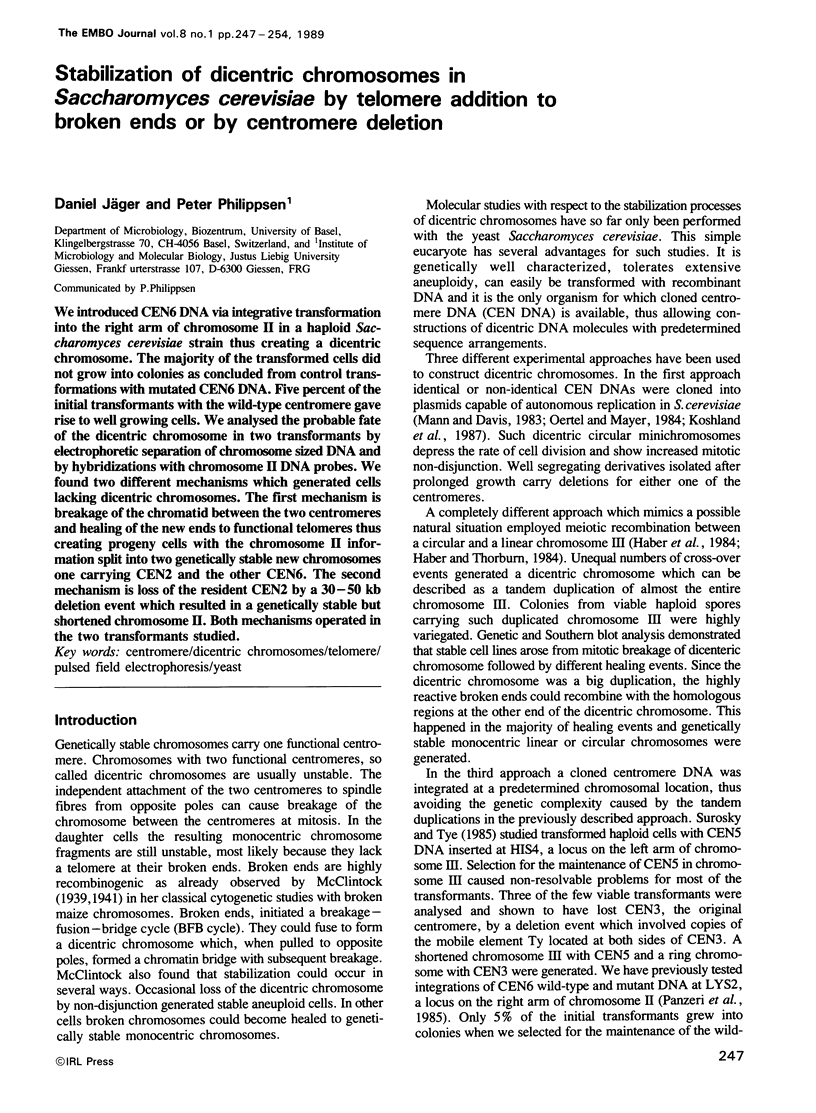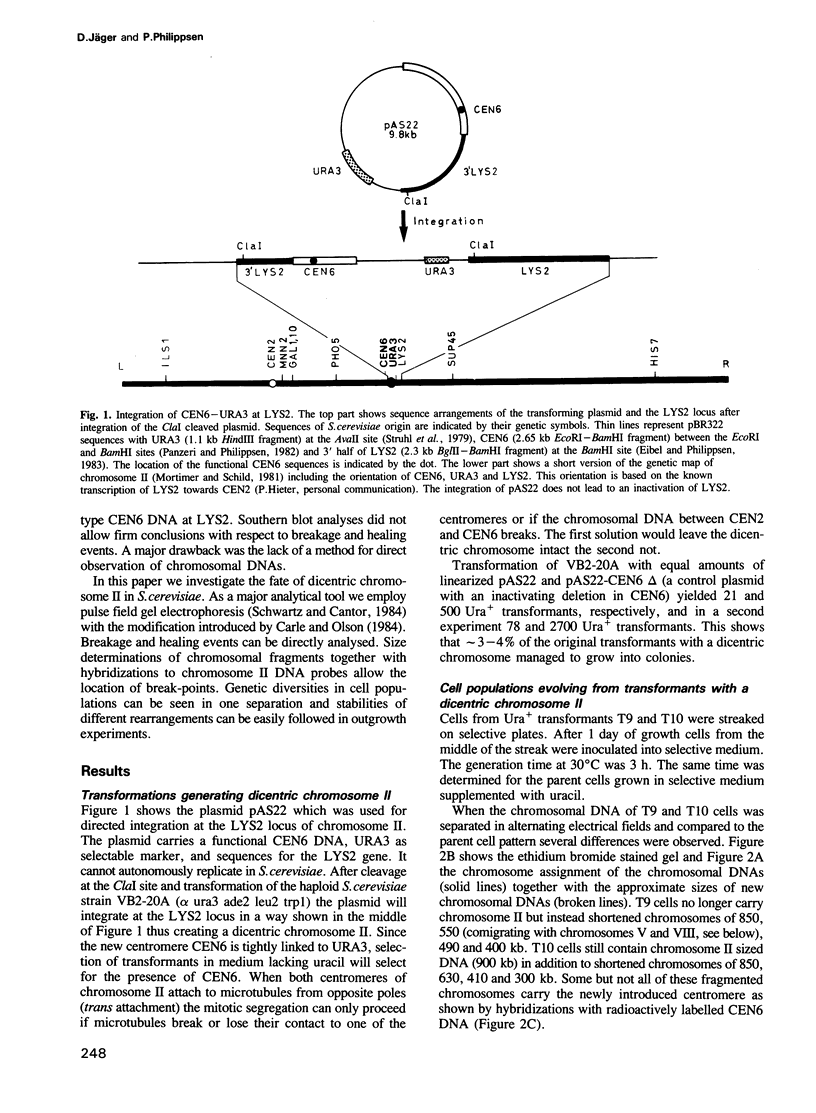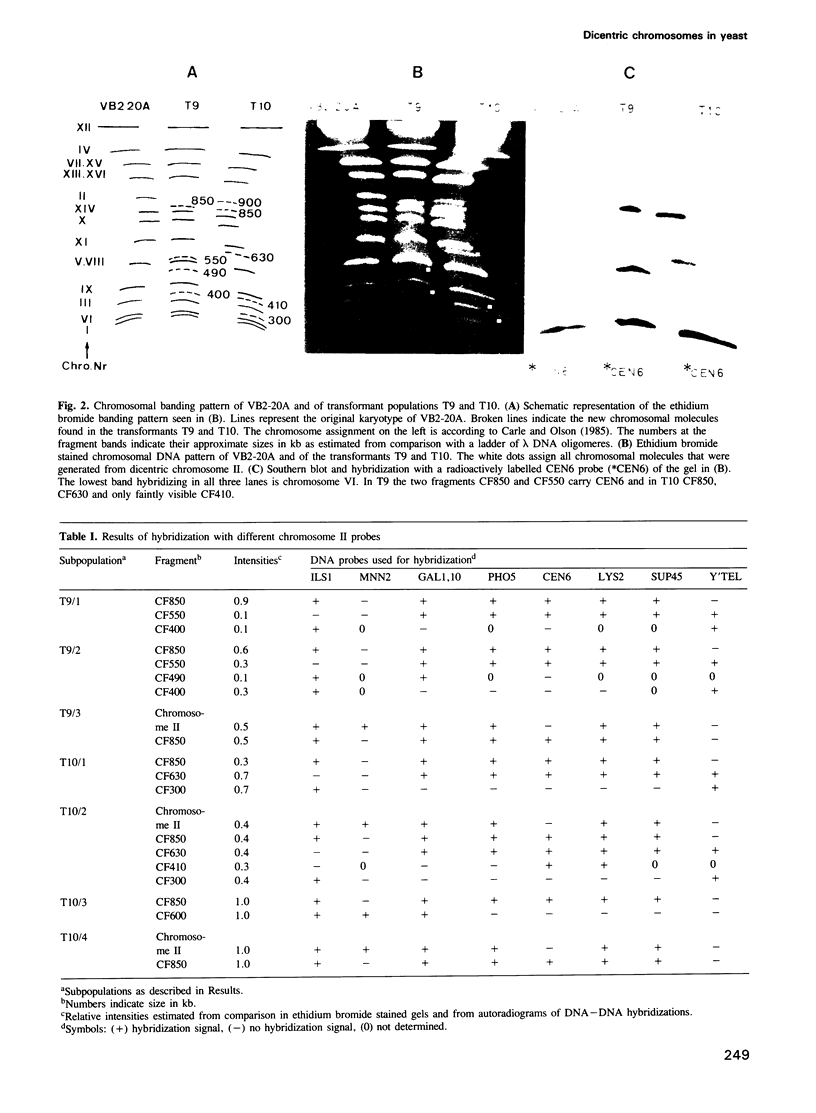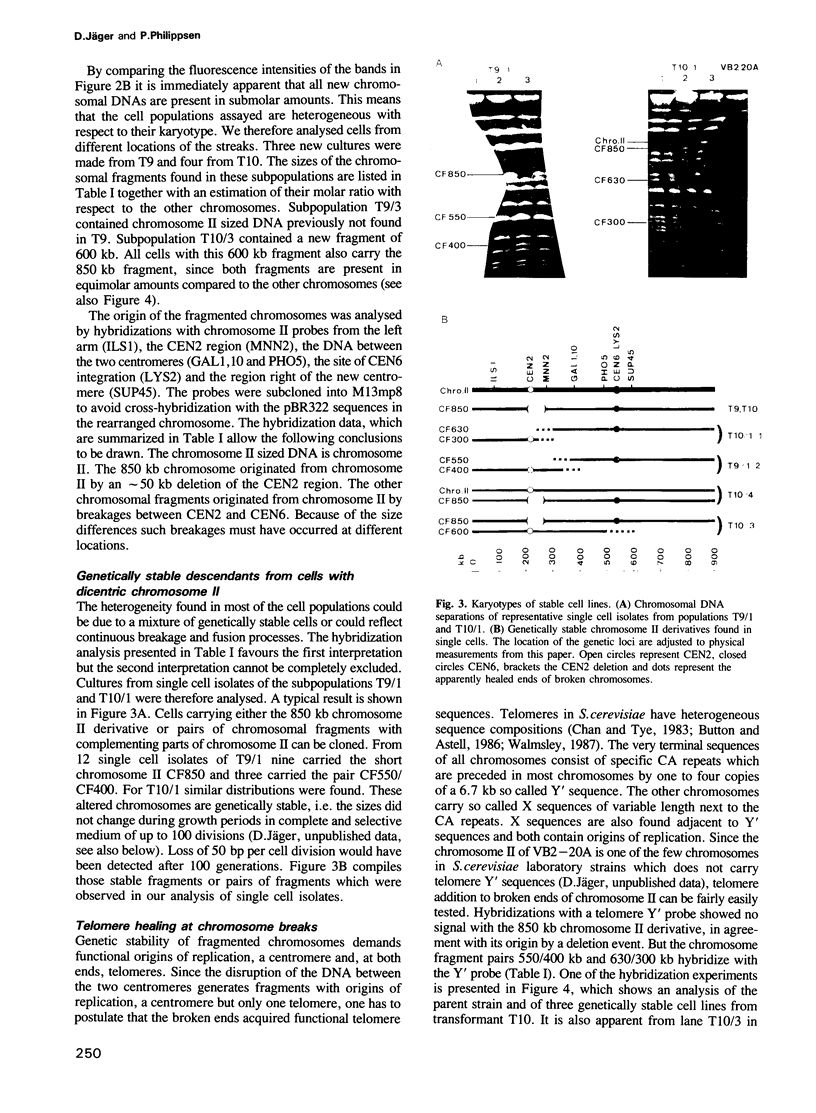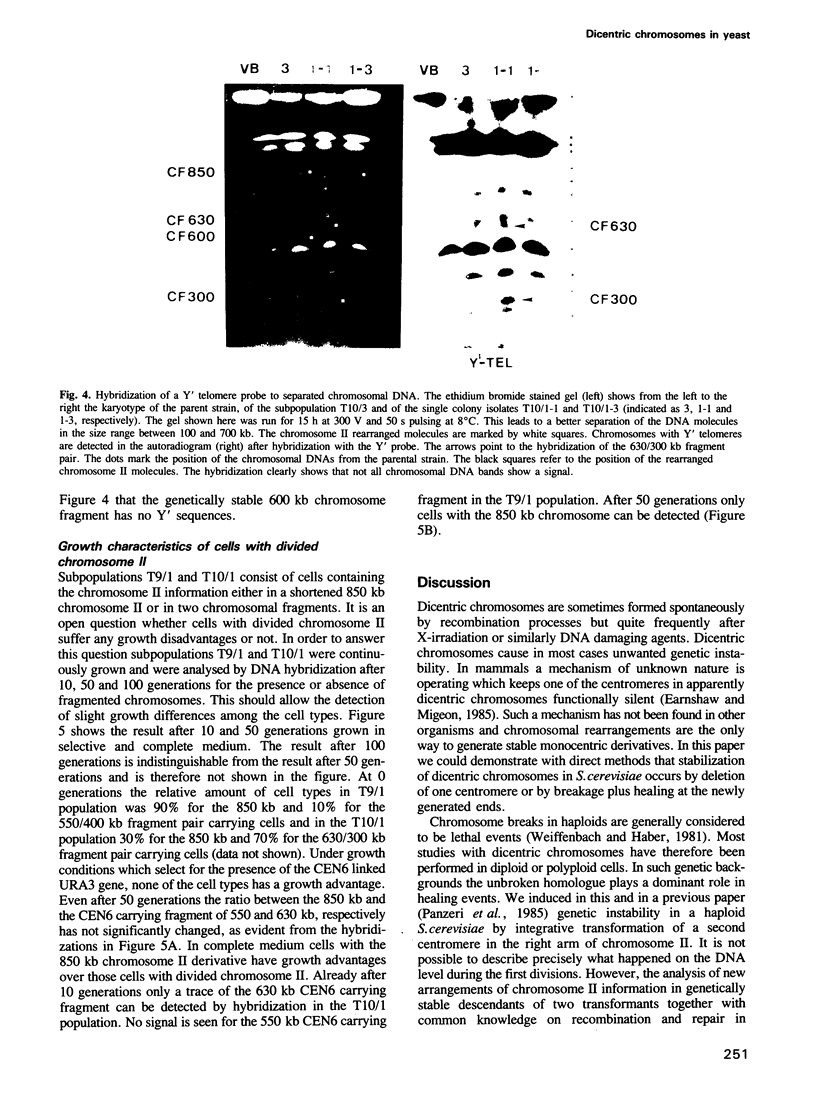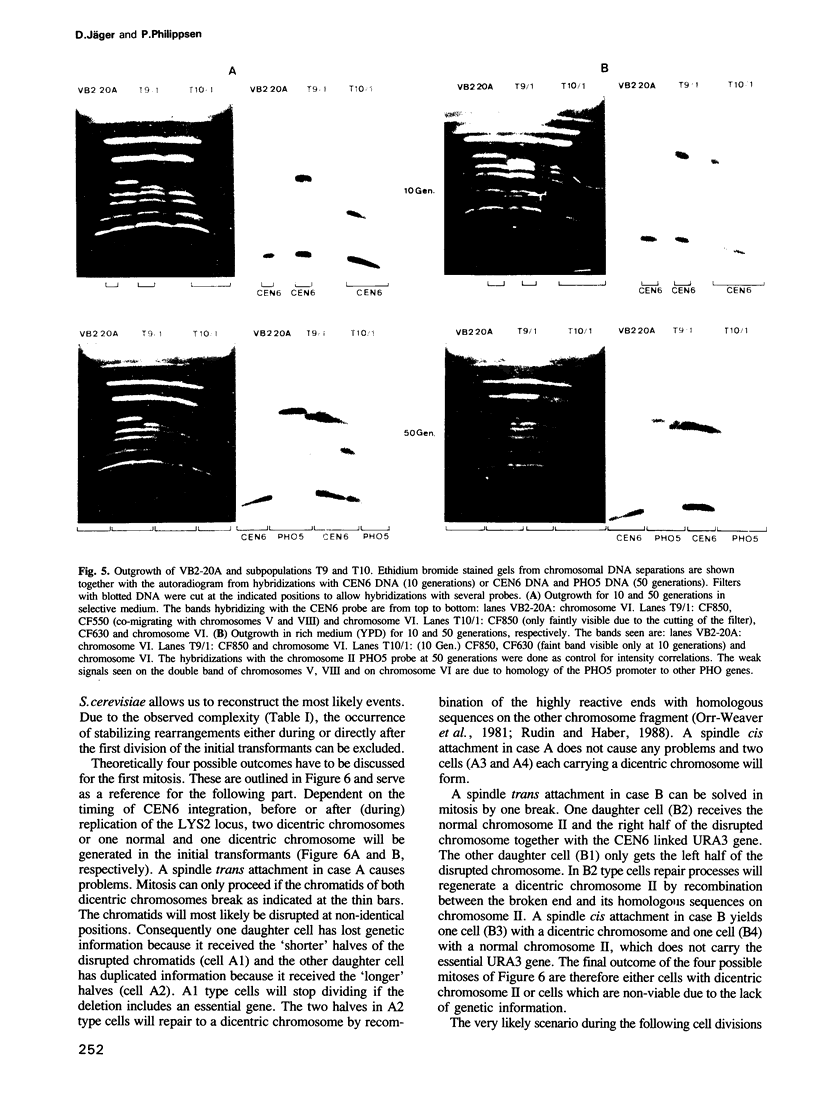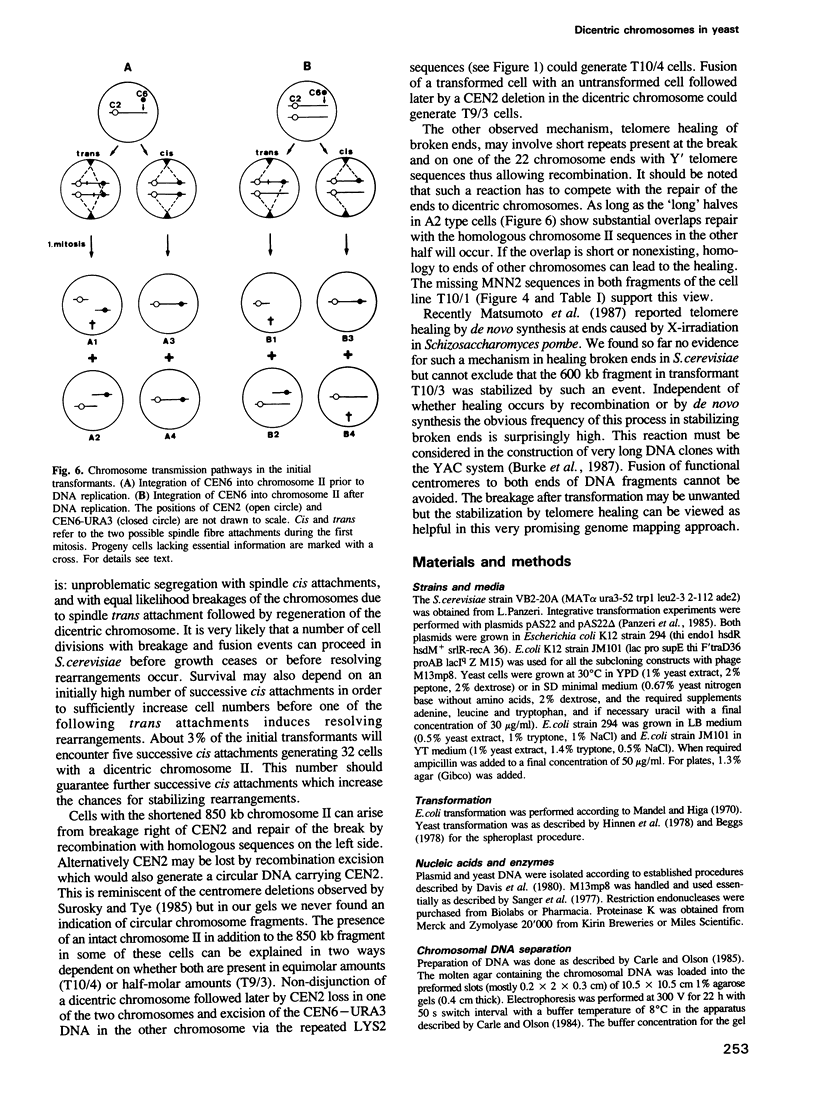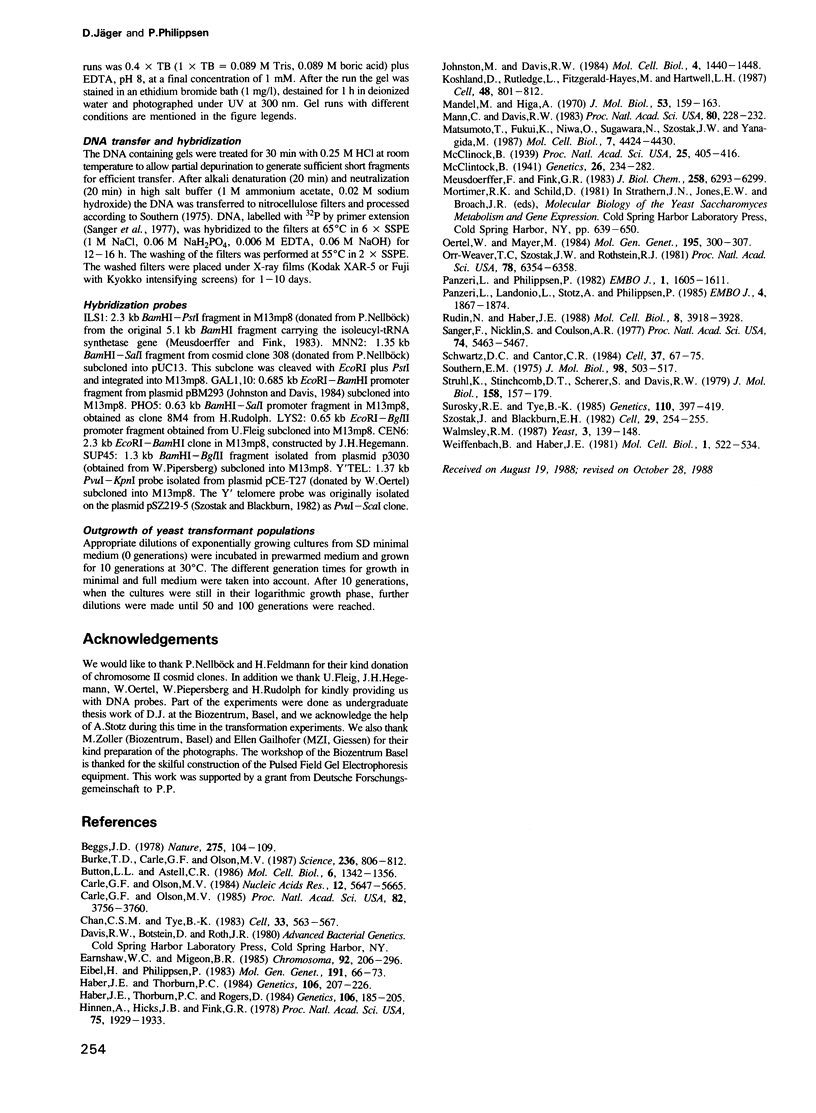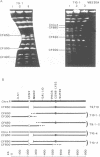Abstract
We introduced CEN6 DNA via integrative transformation into the right arm of chromosome II in a haploid Saccharomyces cerevisiae strain thus creating a dicentric chromosome. The majority of the transformed cells did not grow into colonies as concluded from control transformations with mutated CEN6 DNA. Five percent of the initial transformants with the wild-type centromere gave rise to well growing cells. We analysed the probable fate of the dicentric chromosome in two transformants by electrophoretic separation of chromosome sized DNA and by hybridizations with chromosome II DNA probes. We found two different mechanisms which generated cells lacking dicentric chromosomes. The first mechanism is breakage of the chromatid between the two-centromeres and healing of the new ends to functional telomeres thus creating progeny cells with the chromosome II information split into two genetically stable new chromosomes one carrying CEN2 and the other CEN6. The second mechanism is loss of the resident CEN2 by a 30-50 kb deletion event which resulted in a genetically stable but shortened chromosome II. Both mechanisms operated in the two transformants studied.
Full text
PDF